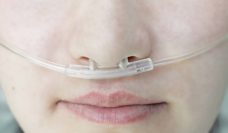Cancer screens, like mammograms and prostate exams, help detect cancer and pre-cancer in people who have no symptoms. The US Preventive Services Task Force (USPSTF) issues yearly guidelines to ensure that providers across the country test their patients on the same schedule. Screening recommendations in the US are assigned by gender for cisgender men and women. But transgender people are nowhere to be found in the USPSTF’s cancer screening guidelines.
Transgender people are particularly vulnerable to a variety of poor health outcomes including depression, HIV, substance use, and suicide. Part of this poor health is due to stigma and minority stress. Most trans people pursue medical transition, and cross-sex hormones and surgeries can cause health issues. For instance, trans women who take estrogen have high rates of deep vein thrombosis. Transgender people face substantial discrimination in healthcare settings, so trans people often delay and avoid care.
Most health research excludes transgender adults if they have taken cross-sex hormones. Until recently, most researchers did not collect data on transgender status. Research that does count trans people asks questions about gender in a variety of ways, so studies cannot be compared to one another. Because of these complications in data collection, we know little about chronic disease in trans people.
The conventional wisdom for transgender health screening is “If you have it, check it.” Though this seems like straight-forward advice for patients and practitioners alike, the framework raises challenges. For instance, trans men who have had surgery to create a male-contoured chest retain some breast tissue, so they remain at risk for breast cancer. But they do not “have breasts” in the traditional sense. Trans people don’t always know what body parts they have following surgery. For instance, studies have documented that trans men don’t know that they retain cervixes after hysterectomies, and trans women don’t realize that they have cervixes formed during vaginoplasties. Both trans men and trans women are at risk for cervical cancer.
In the information vacuum created by the USPSTF, LGBTQ-focused organizations have created their own guidelines for providers. Unlike the USPSTF, these organizations are not required to review all available evidence so cannot be treated as a gold standard. Other community groups encourage trans people to ask their doctors about getting tested. Without guidelines from the USPSTF, trans patients depend on self-advocacy and their doctors abridged knowledge to properly screen them for disease.
Lack of screening guidelines is one of several reasons that transgender people are less likely to be screened for cancer than cisgender people.
Trans people seek out routine medical care less frequently than cisgender people, so providers have fewer opportunities to encourage their trans patients to get tested or acquaint themselves with trans health issues. Even though insurers have to cover appropriate health screenings for trans patients, insurers may initially refuse to cover gender-specific care that does not match the gender marker on the patient’s insurance.
Screening saves lives. When a provider and patient detect a disease early, they are able to treat it in the most effective way. Without USPSTF guidelines, transgender people are systematically excluded from state-of-the-art practice. Trans-specific screening guidelines would help ensure trans people have the same chance at early, life-saving treatment as the rest of the population.
Photo via Getty Images














